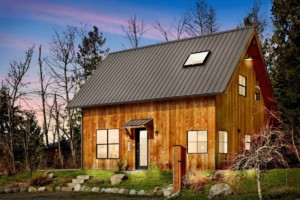Moving into a new home means that everything is now your responsibility. No more calling the landlord to fix the finicky water heater or cracked tiles. You’re responsible for the maintenance and any repairs that arise—and they will arise.
To avoid costly repairs, stay on top of your home maintenance with these great tips from home repair specialists.
1. Prevent Frozen Pipes
“You can’t control the weather, but you can control the effect cold temperatures have on your pipes. Follow this advice the next time the temperature plummets:
- Let a few faucets trickle. Moving water resists freezing.
- Set your thermostat no lower than 55 degrees, even if you’re out of town.
- Open under-sink cabinets to let warm air circulate around the pipes.
- Wrap exposed pipes with electrical heat tape.
- Insulate vulnerable pipes with foam insulation.
- Run a space heater in unconditioned spaces where pipes are located to keep the temperature above 40 degrees.”
– Carl McDaniel, Director of Technical Services of Rooter Plumbing
2. Install Smoke and Carbon Monoxide Detectors
“An estimated $12 billion in personal property is lost every year due to house fires. Make sure you install a working smoke and carbon monoxide detector during your home renovation and repair.” –Sage Singleton, Home Safety Expert at com
3. Deep Clean After Repairs
“After hiring a home repair specialist, your home will often have a lot of dust and sediment leftover from the work that was done. Many homeowners don’t bother to do a deep clean of the area afterward, but you really should. Heavy amounts of dust can cause allergies to flare up, which is easily avoided by cleaning your home thoroughly after any repairs. You’ll also feel great about having a sparkling clean newly repaired home, instead of a dirty one. Cleaning up afterward is a must.” –Caleb Wetherly, Founder and CEO of Lemonly
4. Establish a Home Maintenance Schedule
“A key tip for homeowners is to keep a home maintenance schedule that includes monthly preventative tasks to keep things running efficiently… Staying on top of preventative maintenance avoids expensive repair and fix it costs in the first place. Some examples of these include draining the hot water heater once a year, cleaning out the duct at the back of the dryer from flammable lint, trimming shrubs to create free air flow around the air conditioning units, replacing air filters four times a year and more.” –John Bodrozic, Co-founder of HomeZada Digital Home Management
5. Do Big Repair and Renovation Projects in the Winter
“I can tell you from first-hand experience that winter time, especially the months of December January and February, is absolutely the best time of year to get any home-improvement projects done around your home, large or small.
Most handyman, home improvement companies, or remodeling contractors, are only as good as the talents of the main owner operator. The reality is the sole proprietor’s of these businesses get stretched thin during the busy time of the year—the spring, summer, and even fall. They are busy managing different jobs providing estimates, meeting payroll, and paying taxes.
The best time to earn the attention of one of these proprietors is when they are the least busy and that’s during the winter. Calling on them to come out and look at your job during the slow part of the season drastically increases your chances that you get their full-time and attention, their best pricing, and ultimately the best oversight of the execution of your project. –Bryan Clayton, CEO GreenPal
6. Prevent Severe Damage to Home Systems with Surge Protection
Plugging valuable appliances into a surge protection strip is not the only way to assume suffiecient surge protection.
“Many homeowners assume sufficient surge protection entails plugging valuable appliances into a surge protection strip. Unfortunately, the protection afforded by a power strip is minimal and leaves many valuable appliances at risk. Entertainment centers, home phones, and computers are not the only electronics that are susceptible to damaging surges. In fact, washers, dryers and even refrigerators contain circuit boards that can be ruined by lightning strikes or other surges.
But it’s not always lightning that’s to blame for frying circuit boards.“Electronic rust” occurs over time as smaller surges created inside the home slowly eat away at the quality of the components inside electronics. While the damage done by a lightning-induced surge is immediate, the accumulation of surges from inside your home can be just as damaging over time.
Homeowners who fail to properly protect their home from surges can be hit with thousands of dollars in damage. Whole home surge protection is not only a fairly quick process, but also a cost effective one.” –Mike Kiser, Service Manager, Best Home Services for www.getbest.com
7. Obtain and Change Home Remotes (I.E. for your garage)
“Having ‘hands on’ the opener remotes may seem like small potatoes when closing on a new home, but if you let it slide it will cost you, forcing you to re-install a new remote or entire system. It could also be a security concern having remotes for your home in the hands of someone else. For security, it’s not a bad idea to reset the programming. This will clear any remote or keypad linked to the motor and would be similar to changing the locks on your entry doors.” –Paul Lipham, CSS Garage Doors
8. Take Care of Your Deck
“Follow these tips from DeckExpert.com to keep your deck safe and in top shape
Remember your roof deck is a roof first. Treat it as such and have it maintained every 2 to 5 years as required by the manufacturer. You should avoid using grills and firepits on any deck and don’t place indoor/outdoor carpeting on a waterproof deck—this will trap water against it for extended periods and risk damaging the coating. And always remember to put plants up on pot feet to allow water to drain and dry off.” –Bill Leys, The Deck Expert



























 United States
United States Canada
Canada